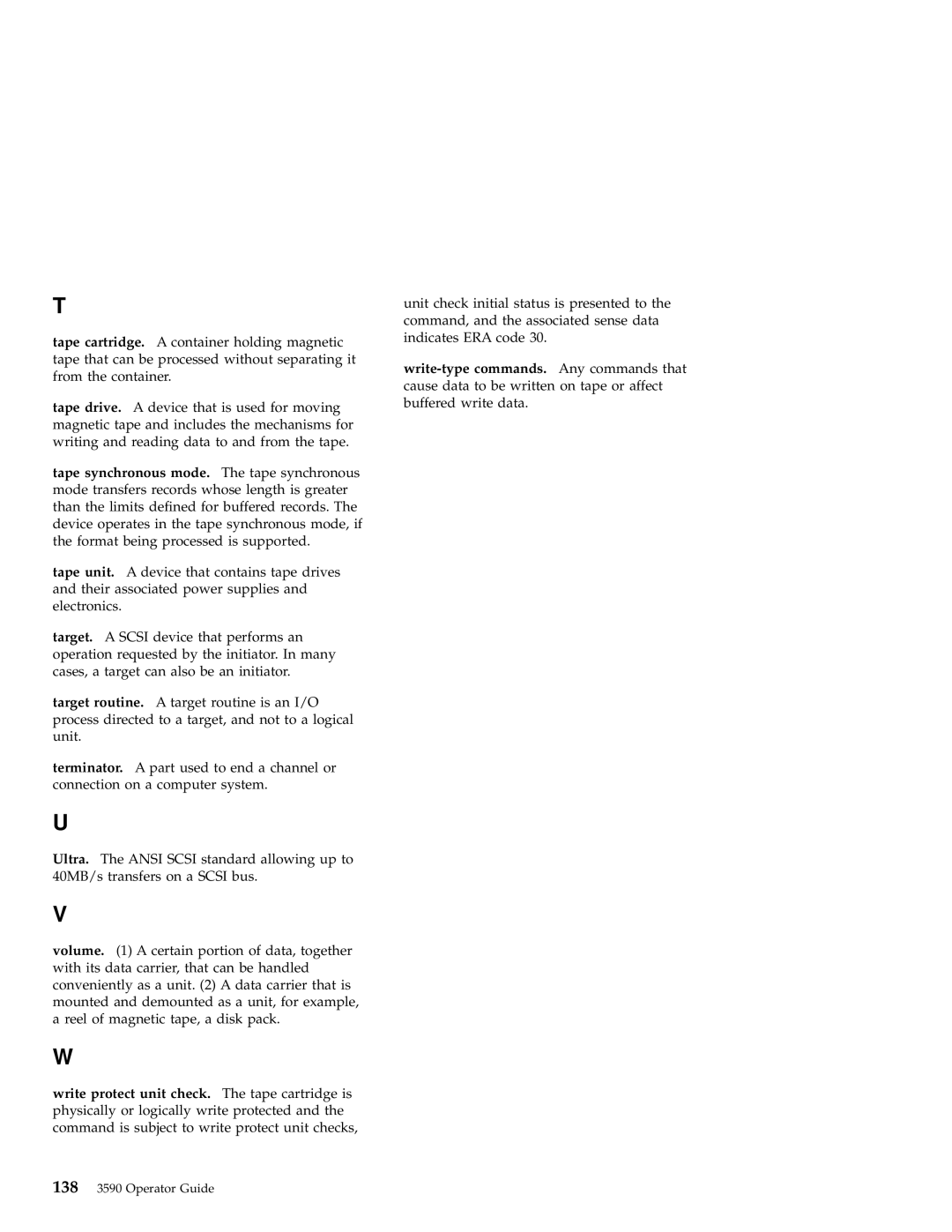T
tape cartridge. A container holding magnetic tape that can be processed without separating it from the container.
tape drive. A device that is used for moving magnetic tape and includes the mechanisms for writing and reading data to and from the tape.
tape synchronous mode. The tape synchronous mode transfers records whose length is greater than the limits defined for buffered records. The device operates in the tape synchronous mode, if the format being processed is supported.
tape unit. A device that contains tape drives and their associated power supplies and electronics.
target. A SCSI device that performs an operation requested by the initiator. In many cases, a target can also be an initiator.
target routine. A target routine is an I/O process directed to a target, and not to a logical unit.
terminator. A part used to end a channel or connection on a computer system.
U
Ultra. The ANSI SCSI standard allowing up to 40MB/s transfers on a SCSI bus.
V
volume. (1) A certain portion of data, together with its data carrier, that can be handled conveniently as a unit. (2) A data carrier that is mounted and demounted as a unit, for example, a reel of magnetic tape, a disk pack.
W
write protect unit check. The tape cartridge is physically or logically write protected and the command is subject to write protect unit checks,
unit check initial status is presented to the command, and the associated sense data indicates ERA code 30.
